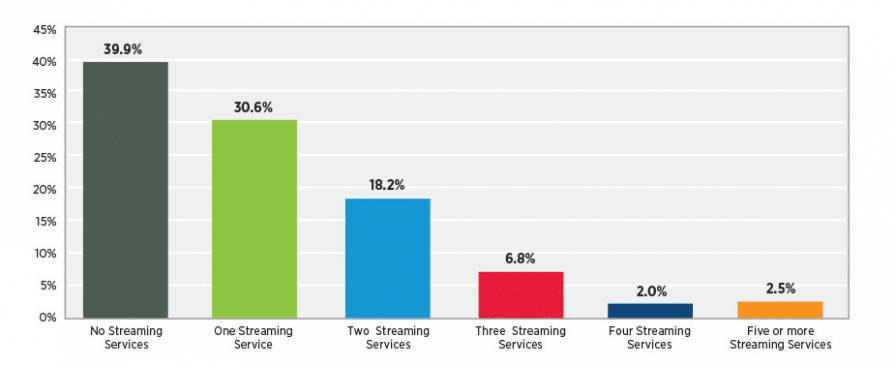Millennial consumers worldwide lead the growth of online video consumption, according to the newly released State of Online Video research report from digital content delivery firm Limelight Networks. Taking a close look at consumers’ changing viewing habits, the annual report shows that the average global viewer watches online video five hours, 45 minutes each week and subscribes to one or more video on-demand services.
The increasing shift to online viewing video is a global trend, with viewers in India, Singapore, and the U.S. spending the most time watching online videos, averaging seven hours, seven minutes; six hours, 37 minutes; and six hours, 35 minutes per week, respectively. Germany had the lowest rate of online video viewership at four hours, 14 minutes, with nearly half of respondents there watching only one to two hours per week.
Q: How many total hours of online video do you watch each week?
“With the proliferation of online video content, viewers are moving away from traditional broadcast television viewing and have increasing expectations for broadcast-quality experiences,” said Michael Milligan, senior director at Limelight Networks, in a news release. “Our research over time has shown a clear increase in expectations and decreasing patience with poor quality experiences.”
Q: Which streaming devices do you use to watch online video on your television? (Select all that apply)
Millennials watch the most online video
Younger people watch the most online video, with viewers 18-25 averaging seven hours, 18 minutes per week and people 26-35 watching six hours, 53 minutes per week. Viewers 60 and older only watch three hours, 46 minutes per week.
The growth of eSports
Although traditional sports programming was the third most watched type of online video content by men, males 18-25 watch more eSports and online video gaming than traditional sports programming.
Consumers won’t waste time on a poor experience
Video rebuffering is the top frustration when viewing videos online—surpassing poor video quality and limited device access. If a video rebuffers twice, more than 61 percent of viewers will stop watching. Only 15 percent will continue watching after rebuffering happens for a third time.
Smartphones gain popularity for viewing
Although computers and laptops are the primary online video viewing device globally, smartphones are the preferred device in India and South Korea. Smartphones are also the preferred device for millennials.
Cable subscribers keep the cord and go further over-the-top
Despite cord-cutting concerns, the report uncovered that people subscribing to cable have twice as many over-the-top subscription services than those without cable.
Q: How many pay online streaming video services (i.e., Netflix, Amazon Prime, etc.) do you currently subscribe to?
U.S. and India lead subscriptions to online video streaming services
Consumers globally are signing on to streaming with 30 percent of viewers noting they subscribe to two or more services. Subscription rates are highest in the U.S. and India, where 50.8 percent and 46.8 percent, respectively, subscribe to two or more services. In comparison, only 16.7 percent of respondents in France subscribe to two or more services.
Movies and TV shows lead online viewing
Globally, viewers spend more time online watching movies than any other type of content. However, viewers in South Korea and the U.K. watch TV shows most often. When viewed by gender, men prefer movies, while women prefer TV shows.
The “State of Online Video” report is based on a survey of 4,000 consumers ranging in age, gender, and education in France, Germany, India, Philippines, Singapore, South Korea, the U.K., and the U.S.










